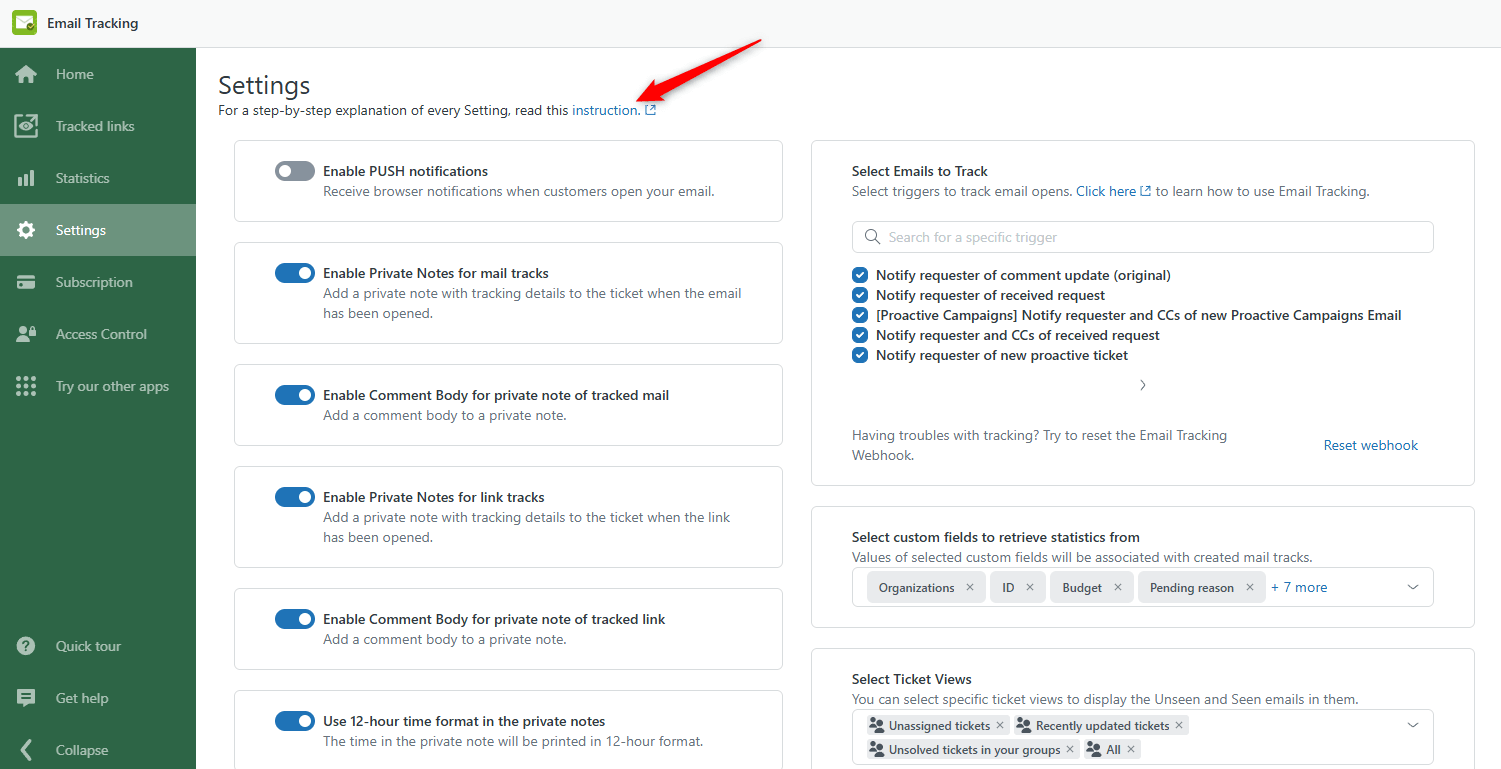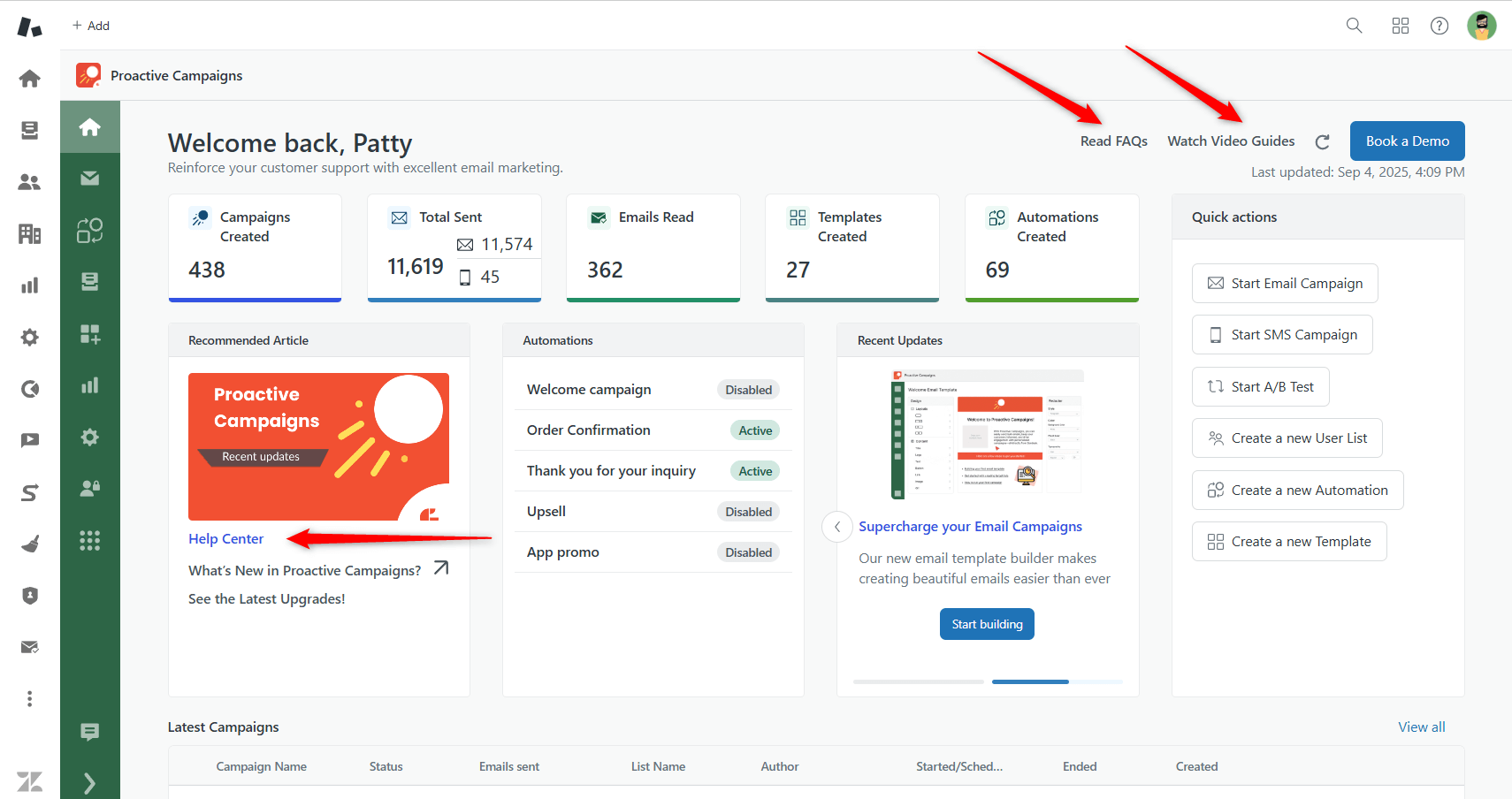As we all know, today, consumers are very demanding. They want their issues to be solved instantly, just right now, and not an hour later. They expect a company to listen to each of their needs promptly, and if you won't, they will leave. Luckily, there is a solution for this problem called customer self-service. In our article, we will speak of the five most common types of customer self-service and describe the benefits they can bring to your business. Just keep on reading.
What is Customer Self-Service
Self-customer service is the ability to provide support to customers without involving a support agent. To put it simply, clients bypass human assistance and find the solution themselves. Today, such a type of support is a must to provide a positive and seamless customer experience. What's more, 70% of buyers expect to see online customer self-service on a company's website. The most widespread customer self-service examples are FAQs, knowledge bases, chatbots, IVR, and online forums or portals. However, that is not a complete list of them. In our article, we will tell you about the five most common self-service channels and how they can help you boost your business.
The Necessity of Customer Self-Service — or Why You Should Implement It
Today's customers really need convenience. They want quick and correct answers without having to wait in line or explain their problem to several agents. Thus, customer self-service is introduced.
Companies, instead of depending completely on human agents, now allow customers to do it themselves through knowledge bases, chatbots, FAQ pages, community forums, and AI-powered support widgets. This new direction is not a fad, but rather an indispensable factor.
It is self-service that is the result of modern customer demands: being quick, reachable, and giving the users the power to handle the experience on their own. If you have not put it into practice, then you're probably lagging behind. But the bright side? It is still available, and the gains are worth it.
Customer Self-Service Benefits
Round-the-Clock Support
Customer self-service is unquestionably the most significant benefit offered by availability. Unlike self-service tools, human agents require breaks, sleep, and holidays, while self-service tools do not. An efficiently organized help center or a chatbot can give answers at any time, which is very important for companies that have customers all over the world or are working in different time zones.
The continuous presence of your support will make the customers feel like they are being pampered, even after working hours. Whether it's 2 AM or the weekend, if they need help, your self-service system will be there for them, never leaving them alone.
Improved Customer Retention
If customers reach you for help quickly and efficiently, they will definitely stay loyal. The number one reason why customers change brands is dissatisfaction with long waiting times or unresolved issues. Self-service can solve this problem.
Instantly getting access to information and solutions means that you are not only with your customers, but you are also with them in the most efficient way. Trust and satisfaction, which are the direct progenitors of higher customer retention and loyalty in the long run, are created.
Reduced Customer Frustration
Self-service eliminates the most frequent pain points during the customer journey. No more being put on hold. No need to repeat your issue to different agents. No waiting days for an email reply.
However, customers are given the right to do things without anyone's help, and hardly any of them would prefer it otherwise. Actually, industry investigations indicate that the majority of consumers solve the problems themselves before they decide to contact a support team. If your company doesn’t provide that option, frustration grows quickly.
Reduced Support Workload
In such a way, the support team can focus on directing their energies towards cases that take more time and are of a higher priority, since customers will be addressing the less complicated ones. This shift reduces the volume of tickets and repetitive inquiries that agents have to handle daily.
It’s a win-win: customers get faster resolutions, and agents are less overwhelmed and more productive. Gradually, a more efficient and focused support operation is built.
Reduce Spending
Introducing self-service options is not only beneficial for your customers but also efficient for your profits. Each query that is answered through a knowledge base or a chatbot instead of a live agent is essentially a cost-saving for you.
Although there might be initial expenses in setting up a strong self-service system, the future savings are considerable. With the decrease in the number of support tickets, staff reduction, and turnover rate, your self-service investment becomes a cost saver in no time.
Customer self-service options
Here are the most common customer self-service examples to describe.
What is a customer self-service portal
If your customers have issues with your product or service, it's likely that other clients have already had a similar problem. What's more, people tend to trust other people's experiences more than your support agents, no matter whether your agents understand your service and how it works better. That is why a community forum or portal is one of the self-service options for customers to receive the help they need from their peers.
Knowledge base and FAQ
The knowledge base is a collection of completely free information on your product. It may include different types of data: video tutorials, articles, user guides, graphics, and other content to help your customers troubleshoot their problems. Frequently asked questions, or simply FAQ, is a valuable section, as it gives brief answers to the most asked questions. However, your knowledge base and FAQ section need to be accessible and searchable so that customers can easily find what they need.
Mobile app
It is crucial to have a mobile app in the digital era we live in. The truth is that people do not want to make calls and speak with customer representatives anymore. And mobile apps can help your customers find the needed answers on the go. Just make sure your app is well-organized and user-friendly for self-service customer support.
Chatbots plus AI
Chatbot, the computer software with AI onboard that simulates human conversation, is a must in today's world. Why? Just because your customers may lack patience and time to search for the solution to their problem. Did you know that more than 70% of customers who search online to find the answer to their question are only half ready to spend more than 10 minutes on that search?In this case, chatbots can easily engage with your customers and answer whatever questions they have.
Automated phone systems
Not every customer is willing to talk to a customer representative to solve their problem. That is why you have to offer them an alternative like an automated menu system. The Interactive Voice Response (IVR) system can quickly assist them in accessing the needed information.

IVR System (Interactive Voice Response)
One example of an IVR system is a phone-based self-service tool that enables customers to interact with an automated voice menu for call routing or basic information provision without the need for speaking with a live agent. The main way these systems usually get information from users is through keypad inputs or voice recognition.
On the other hand, a customer may call your support line, then press “1” to hear the balance in the account or “2” to set a new password. In this example, the customer will not have to wait for the representative. IVRs are particularly suitable for high-volume environments because they can reliably handle simple issues without involving the human agents and prioritize the more important calls.
IVRs do not only reduce the burden on call centers but also make it easier for customers to resolve their issues quickly, while at the same time leading to shorter resolution times and higher customer satisfaction.
In-Product Help
In-product help enables users to access contextually relevant support directly within the app or software that they are utilizing. Such forms of help can be tooltips, or they might be short articles embedded in the knowledge base, or even short chatbots that respond to the user's input instantaneously.
Unarguably, the benefit is that customers are not required to exit your product to get support. Considering how-to tutorials as well as quick feature fixes, users are sure to find the exact times and places they need.
This kind of service gives users a perfect experience, it lowers their annoyance level, and it helps them adapt to and use the product better — especially during the onboarding process and when new features are introduced.
Hybrid Portal
Essentially, a hybrid portal is a self-service and live support combination in one place. It generally comprises a searchable knowledge base, a chatbot or virtual assistant, and if you are still not satisfied, it is also very easy to get access to human agents.
Clients can initially opt for independent help; however, if they find it insufficient, they can submit a request, start a live chat, or schedule a call without any inconvenience.
Such a model gives customers the freedom plus option to exert some control over their journey in customer support. It is also the best fit for businesses that want to energize their users but, at the same time, still keep a safety net for those more difficult or confidential issues.
Why you can trust us
Customer Self-Service Use Cases
Implementing customer self-service is not just about reducing support workload—it’s about giving customers the power to resolve their needs quickly, conveniently, and on their own terms. Below are some of the most common and impactful use cases that businesses across industries successfully apply.
Account management
Allow customers to update personal details, change passwords, and manage subscription settings without contacting support.
Order tracking and delivery updates
Provide real-time tracking pages where customers can check the status of their order or shipment at any time.
Returns and refunds processing
Offer online forms or portals where customers can initiate a return, download return labels, and track refund progress.
Appointment scheduling and rescheduling
Enable customers to book, reschedule, or cancel appointments directly via an online calendar without waiting for agent confirmation.
Service activation and cancellation
Give customers self-service options to activate a product, start a service, or cancel a subscription quickly and securely.
Troubleshooting and diagnostics
Provide interactive troubleshooting tools or guided wizards that help customers identify and fix common problems.
Payments and billing inquiries
Allow customers to make payments, view billing history, download invoices, and update payment methods online.
By offering a variety of self-service options, businesses empower customers to take control of their experience while significantly reducing the need for direct support interactions. This leads to faster resolutions, higher satisfaction, and more efficient use of resources—making customer self-service a win-win for both sides.
Benefits of customer self-service: Why Should Provide?
Reduced customer frustration
It is no secret that most customers get frustrated when purchasing a product and do not know how to use it. Sometimes this results in negative reviews and feedback, which other customers can see. Having different types of customer self-service is a great way to get rid of customer frustration, as it gives a customer an easy way to solve their problems before they decide to provide you with negative feedback. Besides, if customers' issues are solved fast, they won't even think of giving you bad reviews, and thus their frustration won't become severe. What is more, instant help can transform their initial frustration into satisfaction. And that is what you are looking for, aren't you?
Reduced support workload
Your customer support service and your agents have a lot of work. That is why allowing your customers to self-serve takes a burden off your shoulders, as well as reduces your agents' workload drastically. In turn, your agents can focus on more important tasks that bring more value to the business. Instead of calling your agents all day long, customers can check the status of their requests on the self-customer service portal. This will save your agents' time on tackling the same issues repeatedly, which can significantly reduce their productivity, as well as their morale.
Reduce spending
Do you know what will help you meet your customers' expectations while saving your money and time? Sure, that is a self-service system, again. Unfortunately, your customers don't pay you for each interaction; however, you need to pay salaries to your agents for their time. An excellent self-service system can help you kill two birds with one stone and create a more satisfied clientele and a time-effective workforce.
Tips for Implementing Customer Self-Service
Update your content from time to time
Content is the most valued in customer service as it helps you unload your sales team and provide responses to common customer questions. As a result, no one imagines good self-help customer service without articles, videos, screenshots, etc. So, we suggest providing a content review to track any changes in your product or service specifications, interface, and more. Consequently, regular refreshes mean you are active and have a better customer experience without a mismatch.
Use multimedia as often as you can
A well-known fact that videos, images, and audio are the best way for perception for most people. So, there's no need for a long explanation of why you need to add videos to your articles. By the way, it is another option for clients to learn how to use your product or service.
Make yourself customer service easy to use
Put yourself in your buyer's shoes or create a short questionnaire for clients to understand the roadblocks they encountered while searching for a solution. Also, create a simple yet appealing help center, forum, or customer self-service software for better customer satisfaction.
Create a mobile-friendly self-service customer support
Fit your self-service portal to any device for buyers to resolve their issues on the go. It seems obvious, however, according to Statista 54% of all traffic comes from mobile devices. Wow! Do you still have any doubts about that?
Emphasize the most common requests
At first, identify the most common reasons your buyers contact customer service representatives. Then, put the links to similar articles everywhere possible. In particular, share your article on home pages, product descriptions, or directly inside the product as we did. Case in point, Growthdot adds links to the most popular articles directly in the Email Tracking app, as shown in the screenshot below.

Another example is the Dashboard of the Proactive Campaigns app, which was made for quick access to the Knowledge base and video library.

Key Challenges Related to Customer Self-Service
While customer self-service offers many benefits, it’s not without its obstacles. Businesses must address these challenges to ensure their self-service solutions are effective, user-friendly, and aligned with customer needs.
Limited accessibility and usability
If a self-service platform isn’t intuitive or mobile-friendly, customers may struggle to navigate it. Complicated menus, unclear labels, or poorly designed interfaces can quickly frustrate users and prompt them to seek traditional support.
Outdated or incomplete information
A knowledge base or FAQ loses its value if the content is inaccurate, outdated, or incomplete. Customers expect relevant and up-to-date guidance, so maintaining the content is an ongoing commitment.
Lack of personalization
Generic self-service experiences may fail to address a customer’s specific needs. Without tailored suggestions, dynamic search, or AI-driven recommendations, customers can feel lost in a sea of irrelevant information.
Difficulty handling complex issues
Self-service works well for common or simple requests, but it can fall short for complex, multi-step problems. If escalation paths to live support aren’t clear, customers may abandon the process altogether.
Low customer adoption
Even with a great self-service system, some customers still prefer direct human interaction. Without proper promotion, onboarding, and clear value communication, adoption rates may remain low.
Technical and integration issues
Self-service tools often rely on integrations with CRMs, billing systems, or order management platforms. Technical glitches, poor synchronization, or security concerns can hinder their reliability.
The key to overcoming these challenges is a customer-first approach, designing intuitive experiences, keeping information current, and ensuring seamless handoffs to live support when needed. By addressing these barriers early, businesses can unlock the full potential of customer self service.
Best Customer Self-Service Examples
If you are using Zendesk, you can opt for Zendesk Suite, an ultimate software for customer self-service. It has everything you need for efficient work:
- AI-based chatbots;
- The ability for fast messaging;
- A fully-integrated help center.
With Zendesk Suite, your customers will be able to easily find answers to any question they may have. It also helps improve the productivity of your workforce with a comfortable agent workspace where they can easily trace and prioritize the customers' requests. Zendesk Suite is customizable software that allows you to create user-friendly portals and receive analytics to help you properly update your self-service tools. But, of course, if you can't customize Zendesk yourself to use it to its full potential, you can always ask for professional help from experts in the field.
Summing Up
Today's market offers plenty of self-service tools for businesses that can help you make your customers happy and loyal. What is more, you can find the optimal fit for almost any support channel you use — mobile apps help those who prefer mobile space, knowledge bases, and FAQs take care of web users. Chatbots can be an ideal fit for social media. The IVR system will efficiently deal with those who prefer to call and need round-the-clock support. What is more, when used together, these self-help technologies can allow your customers to find the necessary information quickly and easily. They also help save costs by dedicating your workforce to more critical tasks. All these make self-service tools worth exploring and adding to your business strategy. So, if you still haven't tried them out, now it is about time.
FAQ
What is customer self-service?
Customer self-service is a support approach where businesses provide tools, resources, and platforms that allow customers to find answers and resolve issues on their own, without direct interaction with a support agent.
Why is customer self-service important?
It reduces support costs, shortens response times, and empowers customers to get help anytime. It also frees up support teams to focus on complex inquiries while improving overall customer satisfaction.
What are examples of customer self-service tools?
Common examples include knowledge bases, FAQ sections, chatbots, community forums, IVR systems, and in-product help features. Many businesses also offer hybrid portals combining multiple self-service options in one place.
How can AI improve customer self-service?
AI enhances self-service by powering smarter search, delivering personalized recommendations, automating content updates, providing multilingual support, and enabling conversational chatbots that handle complex queries.
What industries benefit most from customer self-service?
Almost every industry can benefit, but it’s particularly impactful in e-commerce, SaaS, banking, telecommunications, and healthcare, where customers frequently seek quick answers and service updates.
How can businesses encourage customers to use self-service?
Promote the availability of self-service tools through emails, onboarding, and in-app messages. Ensure the platform is user-friendly, mobile-optimized, and regularly updated with accurate information.
What challenges come with customer self-service?
Challenges include low adoption rates, outdated or incomplete information, lack of personalization, and difficulty managing complex issues without human assistance. Addressing these requires regular updates, intuitive design, and clear escalation paths.








